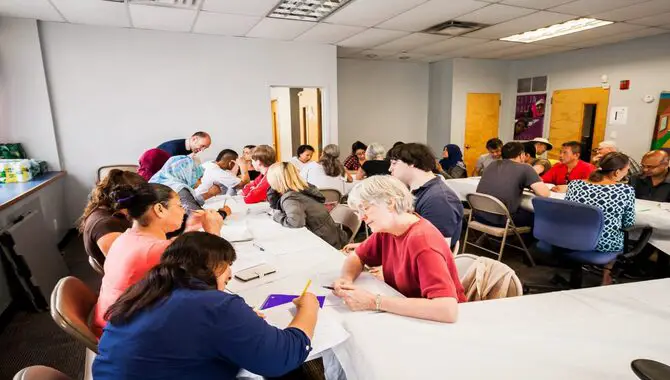Support is the foundation of all academic, social, and emotional growth. Yet, the Arab-American community often experiences underrepresentation and marginalization in the American education system. Arab Americans face both linguistic and cultural barriers when it comes to their academic success.
With the diversity of students, many schools struggle to provide students with the right kind of support. And also which is essential for their academic and personal development. Here, we’ll discuss how teachers can support Arab-American students in the classroom. Also, there are several things to help build their confidence and sense of belonging.
Arab-American students are diverse students with cultural backgrounds and experiences that differ significantly from most students in the United States. Teachers need to be sensitive to the cultural differences of Arab-American students.
They need to build relationships with them that are respectful and supportive. Here, we will outline the steps teachers can take to support Arab-American students in the classroom effectively. We will also discuss some common challenges that Arab-American students face.

What Do We Mean By “Arab-American?”
Arab-American students are those who have ancestry from the Arab world. They come from various cultural backgrounds and face unique challenges in the classroom. Effective support for Arab-American students requires knowledge and understanding of their cultural context.
Effective support for Arab-American students requires understanding their language and educational needs. Understanding Arabic as a second language and its customs and traditions is vital. This will help create a positive learning environment for them.
The best approach to supporting Arab-American students is to provide them with equal educational opportunities and resources. This includes learning about their culture, heritage, and experiences and providing them with culturally relevant materials and activities in the classroom. Additionally, it’s vital to recognize the unique needs of these students and work to adapt curriculums, materials, tools, and teaching styles to meet their needs.
How Teachers Can Support Arab-American Students
Arab Americans are people who identify with Arab culture and ancestry. This includes people from the Middle East, North Africa, the Horn of Africa, and Persia. There is no definition of what constitutes an Arab-American, as this term is used to describe a wide range of individuals.
While Arabic has been spoken in parts of the Americas since before European colonization, it was only considered a part of American culture after World War II. The increased popularity of Arab cultures in America during this time led to the development of terms such as “Arabs” or “Middle Easterners” to refer to various groups within that community. Today over 20 million Arabs are living in North America alone, making them one of the largest minority groups in the United States.
As teachers, it is our responsibility to understand the culture and heritage of Arab-American students. We also must respect their cultural differences and sensitivities. To support Arab-American students, we must be aware of the unique needs that they may have. We must encourage them to share their thoughts and experiences with us to create a positive educational environment for all.
Sensitivity And Respect For Cultural Differences
As the number of Arab-American students in schools has increased, so has the demand for teachers who are sensitive to their cultural differences and can positively support them. To help Arab-American students succeed in the classroom, teachers should use relevant curriculum materials, create positive relationships with them, and respect their heritage and traditions.
By creating a supportive environment for all students, teachers can help Arab-American students feel more comfortable in school and improve their chances of academic success.
It is important to remember that Arab-American students may have unique needs, goals, and values that must be respected and addressed. You can only do this by using relevant curriculum materials and creating an environment of respect and tolerance in the classroom.
Overall, teachers must support Arab- American students in their education while respecting their cultural differences and helping them reach their educational goals.
Building Relationships With Arab-American Students

Teachers can start by getting to know their Arab-American students. You can talk to them about their backgrounds, interests, and goals. Teachers can also ask questions that will help them better understand the students. Once the teacher understands the students, they can build relationships with them.
It would be best if you built these relationships on mutual respect and understanding. By building these relationships with Arab-American students in the classroom, teachers can improve their teaching skills and have a more enriching experience teaching.
Teaching English As A Second Language

Arab-American students may face unique challenges when it comes to succeeding in school. You can overcome many of these challenges with the help of teachers and other school staff. Teachers can support Arab-American students by providing them with resources, such as literature and academic support, and by teaching them how to be successful in English.
Arab-American students may also need extra support regarding bullying or discrimination. By creating a safe and welcoming environment for Arab-American students, teachers can help them feel supported and confident in their own identities.
Sharing resources and teaching students how to be successful in English are just some ways teachers can support Arab-American students in the classroom. By creating a supportive and accepting environment for all students, teachers help foster a culture of academic excellence in their schools.
Supporting Arab-American Students In The Classroom

Teachers are vital in ensuring equal access to educational opportunities for all students. They can support Arab-American students by creating a welcoming and inclusive classroom environment. Teachers can do this by providing Arab-American students with opportunities to share their cultural heritage in the classroom through cultural activities or assignments.
They can also facilitate discussions about topics that are important to the Arab-American community, such as immigration policies, the Arab-Israeli conflict, or current events.
Another way teachers can support Arab-American students is by facilitating class activities and discussions that include diverse perspectives and viewpoints. By including students from different backgrounds and experiences, teachers can help students learn how to think critically and engage in a multicultural society. In addition, by participating in class activities and discussions, Arab-American students can add diversity and richness to the classroom experience.
Understanding The Cultural Context Of Arab-American Students
Arab-American students face unique challenges in the classroom that require tailored support. Teachers must understand the cultural context of Arab-American students to provide them with the best education possible. Creating a safe and welcoming environment is critical, as Arab-American students often have difficulty feeling comfortable in mainstream classrooms.
The teacher’s role in supporting Arab-American students should always continue at the classroom door. By understanding the unique needs of Arab-American students, teachers can help them achieve their full potential in the classroom.
Building Relationships With Arab-American Students

When it comes to supporting Arab-American students in the classroom, it is important to build relationships with them. Teachers can do this by engaging in conversation and sharing experiences. Additionally, it is important to be respectful of their culture and heritage and to avoid making assumptions about their beliefs or values.
In addition to building relationships with teachers, it is also helpful to provide resources and support materials that are relevant to Arab-American students. By taking the time to understand and support Arab-American students in the classroom, teachers can help them feel comfortable and supported.
Supporting Arab-American Student’s Academic Success
As a teacher, it is important to support Arab-American students’ academic success by providing access to culturally relevant materials and resources.
You can also facilitate discussions about Arab-American culture and history in the classroom. Additionally, you can create an inclusive environment by using effective communication strategies. Arab-American students can benefit from positive reinforcement and encouragement. By working together with your students and teachers, you can help them reach their full potential.
What To Do If You Experience Racism Or Discrimination While Supporting An Arab-American Student?
If you experience racism or discrimination while supporting an Arab-American student, it’s important to assess the situation and take action accordingly. When facing racial or ethnic discrimination, it’s important to remain calm and respectful. At the moment, try to document what happened for future reference.
If you feel that you need to discuss the matter with a school counselor, do so. Additionally, seek support from other Arab-American parents or students in your community. By taking these steps, you can help ensure that all students are allowed to succeed and feel valued. Whether you are a white supporter of an Arab-American student & experience racism or discrimination. Well, there are several things you can do to support your well-being and that of the student.
1) Address the issue head-on. When something feels wrong, it usually is. Talk to your friend or family member about what’s going on – even if they don’t want to talk about it in detail. This will help them process their feelings and come up with a solution that both sides can agree on.
2) Seek outside support. “Call for help” may seem like an overused phrase, but sometimes all we need is someone who understands our situation to listen without judgment and offer words of encouragement. Reach out to community organizations such as CAIR (Council on American Islamic Relations), Hatim al-Hajj Ibrahim Network for Middle Eastern Christians in North America, or the Muslim Community Association of Canada for resources and support.
3) Speak up! Discrimination against any group of people is never acceptable – no matter who those groups are. If you see something happening somewhere – online, at school, etcetera – speak out! It only takes one person to stand up against bigotry before attitudes start changing for the better.
Conclusion
Supporting students is an essential part of educating them. When students are supported, they can thrive and succeed in the classroom. However, supporting students effectively also requires teachers to be aware of their cultural backgrounds and sensitivities, as well as the needs of other students in the classroom.
There is a lot that teachers can do to support Arab-American students in the classroom, and it begins with fostering relationships with them and their families. Supporting Arab-American students in the classroom takes work. Many cultural and language barriers need to be overcome.
However, by following the tips outlined here, teachers can help their students reach their full potential. We hope our information on how teachers can support Arab-American students was useful.
Frequently Asked Questions
What Are Some Common Barriers That Arab-American Students Face In School?
There are several barriers that Arab-American students may experience when it comes to school, including discrimination, racism, and lack of understanding from classmates and teachers.
What Is The Difference Between A “Teaching Style” And An “Approach To Teaching?”
A “teaching style” is a set of habits that teachers use when teaching. For example, some teachers may use a hands-on approach, while others may rely more on the lecture. An “approach to teaching” is the overall philosophy that guides how educators teach students.
How Do You Deal With Classroom Bullying In Schools?
When it comes to dealing with classroom bullying, it is never okay. What’s more, any bullying, no matter how minor, is an act of discrimination. And that’s why it is so important to speak up if you feel that you are being bullied. There are a few ways that you can support Arab-American students in the classroom. Some of these include providing cultural diversity resources, creating a safe environment, and offering support through mediation/conflict resolution.
How Does Arab Culture Value Education?
Arab culture values education highly and routinely spends money on their children’s education. Many parents believe that a higher education is better than an average one, and students are often encouraged to pursue a university degree instead of vocational training. Arabic is the language most commonly spoken in school classrooms in the Arab world.
How Can Teachers Help Black Students?
Teachers can support Arab-American students by respecting their cultural and linguistic differences. They can also provide Arab-American students with opportunities to share their own experiences and perspectives. In doing so, teachers can help demystify Arab culture and language for the students, leading to increased understanding and communication among all students.

I’m a writer and blogger who loves to talk about entertainment, culture, and relationships. I love to share my thoughts and insights on these topics, and I’m always looking for new ways to engage with my readers. I’m also a big fan of learning new things, so I’m always exploring new areas of interest.
